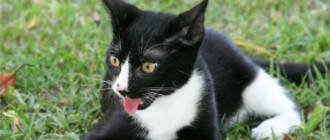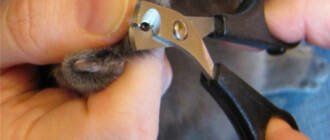– I can!" laughed the ogre. – And to prove it to you, I'm going to turn into a lion. Look!
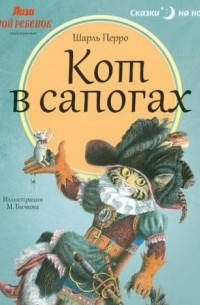
- Who are the main characters in the fairytale Cat in Boots?
- Charles Perrault The Cat in Boots
- The Cat in Boots
- 5
- 5
- Cat in Boots. Where did he come from?
- Where did The Puss in Boots come from?
- The Italian roots of the cat in boots.
- Who is the author of The Cat in Boots?
- Who wrote the fairy tale "Puss in Boots"? Who is the author of the book? What is the tale about?
Who are the main characters in the fairytale Cat in Boots?
The miller's youngest son – aka the master of the Puss in Boots, aka the Marquis of Karabas (as the Puss called him). This young man thought he was a loser when he got his share of his father's inheritance in the form of a cat, while his brothers got a mill and a donkey. "At least they can earn their own bread," he thought, "and I'll probably starve to death. But he turned out to be the luckiest of the brothers, because the cat was not an ordinary cat, but a talking and clever, shrewd one. He married his master to the princess and got him a palace and the domain of the Ogre. And the young man himself does not like to work or do anything, but you have to hand it to him, he supported the idea of the Cat and immediately responded to any of his scams.
The Cat in Boots – was given to the miller's youngest son as an inheritance. The cat is very smart, brave, businesslike, and talkative. Immediately he demanded boots from his master, which is why he got such a title – Puss in Boots. Throughout the whole fairy tale, the Puss in Boots was the only one who acted. He made his master happy.
The King – he's not exactly the main character, of course, but how can he be – the King, and not the main character in a fairy tale? He's the King of the fairyland, so he's the most important in that land! And he also gave his daughter in marriage to the Marquis of Carabas and became his father-in-law.
The Princess – fell in love with the Marquis of Carabas and married him. So she became the wife of the Marquis of Carabas.
The Giant Ogre. – Although he was frightful and fierce, and terribly rich in addition, the Puss in Boots cunningly fooled him, tricked him into turning into a mouse and ate him at once. The Marquis of Carabas got all the Ogre's riches.
Charles Perrault
The Cat in Boots
A certain miller left his three sons a small inheritance – a mill, a donkey and a cat.
The brothers immediately divided their father's inheritance: the older one took the mill, the middle one took the donkey, and the younger one was given the cat. The younger brother was very sad that he had received such a bad inheritance.
– Brothers can honestly earn a piece of bread, if they live together, – he said. – But me, when I eat my cat and make mittens out of his skin, I will have to starve to death.
– Don't grieve, master," he said earnestly and seriously, "give me a sack and a pair of boots so that it will be easier to walk in the bushes. Then you will see that you have not got such a bad inheritance as you think.
Master Cat didn't really believe his words. But he remembered his various tricks and thought, "Maybe. Cat might actually be able to do something for me!"
As soon as the Cat got the boots from his master, he deftly put them on. Then he put a sack full of cabbage, threw the sack on his back and went into the woods, where there were a lot of rabbits.
He went into the woods, hid behind some bushes, and waited for some young, foolish rabbit to stick into the sack for some cabbage.
No sooner had he hid than he got lucky: a young, trusting rabbit got into the sack. The cat quickly rushed to the bag and tightened the ties tightly.
Very proud that the hunt was so successful. The cat went to the palace and asked to be allowed to see the king.
He was led into the king's chambers. Upon entering there. The cat bowed low to the king and said:
– Great King! The Marquis Carabas (as the cat likes to call his master) ordered me to bring you this rabbit as a present.
– Tell your master," replied the king, "that I am very pleased with his gift and thank him.
Another time he hid in a field, among the ears of wheat, and opened a bag of bait.
When two partridges fell into the sack. The cat immediately took the partridges to the king. The king gladly accepted the partridges as well and ordered him to treat the Cat to wine.
The Cat in Boots
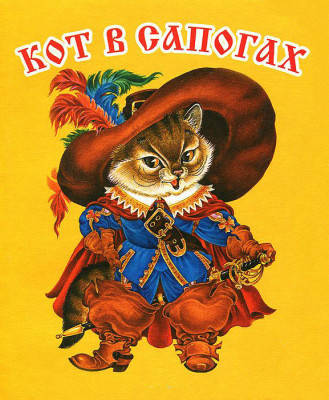
The Puss in Boots is a work by Charles Perrault, which is familiar to almost everyone on the planet. The tale is about an unenviable inheritance, which was received by one of the miller's sons. After his death, his father left him a cat and some coins. But the cat was not so simple: he asked to buy him boots with the last of the young man's money. After that, he did everything he could to get his master into the marquis and also to marry the king's daughter. The tale tells us that sometimes the loyalty of friends and wit are more valuable than gold.

One miller, dying, left his three sons a mill, a donkey and a cat. The brothers divided the inheritance themselves and did not go to court – the greedy judges would take away the last. The eldest got the mill, the youngest the donkey, and the youngest the cat. The younger brother could not take comfort from the fact that he had received a miserable inheritance.
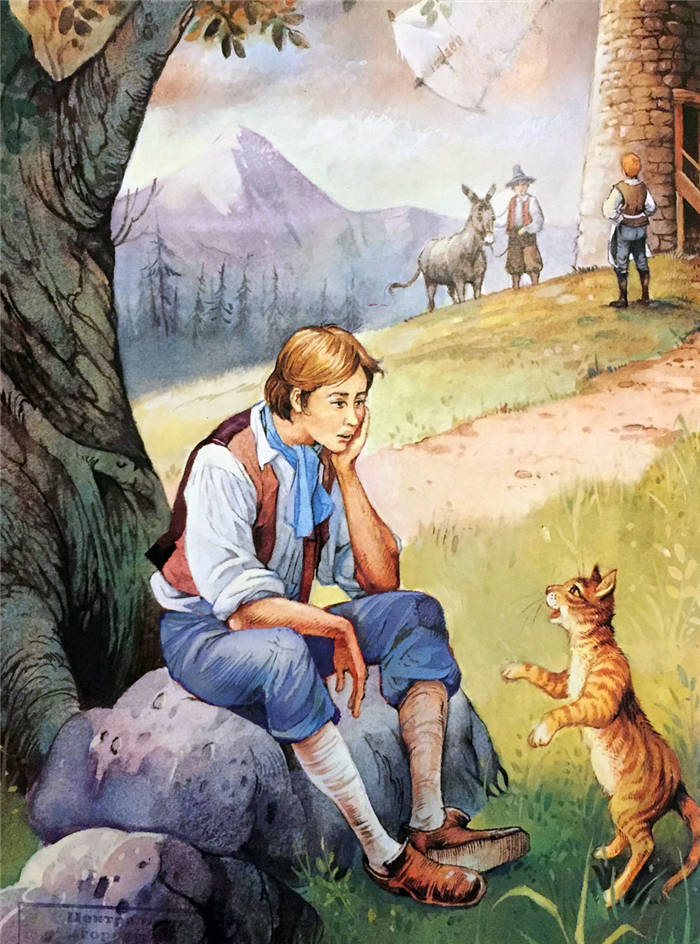
– Good for the brothers," he said. – They will live together and earn their bread honestly. And me? Well, I'll eat a cat, sew mittens from its skin. And then what? Starve to death?
– Stop grieving. Give me a sack, and order a pair of boots to make it easier to walk through the woods and fields, and you will see that you are not so offended as you now think.
The owner did as the cat told him to do. And as soon as the cat got everything he needed, he quickly got his shoes on, threw the bag over his shoulder, and went to the nearest reserved forest.
From the bag, which contained bran and harekraut, the cat set a cunning trap, and himself, stretched out on the grass and pretended to be dead, began to wait for prey. He did not have to wait long: some silly young rabbit immediately jumped into the bag. The cat, without thinking long, tightened the bag and went to the royal palace. When the cat was led into the king's chambers, he bowed respectfully to the king and said:
5
The main idea of the fairy tale "Puss in Boots" is that you shouldn't judge by appearances. Perrault's tale teaches us never to be discouraged. In the fairy tale "The Cat in Boots," I liked the cat who, with only a sack and boots, was able to make his master's life rich and prosperous in a short time.
I really liked Charles Perrault's fairy tale "The Cat in Boots." And its main character the cat, who only had a bag and boots, managed to make his master's life rich and happy. The author showed us how important it is not to be discouraged and be resourceful in achieving goals. Also from the fairy tale we understand that one should not judge a person's abilities by his or her appearance. The miller's youngest son did not expect to benefit from the cat he inherited, and the cat refused to be enterprising and made his master a rich man, and arranged his marriage to the king's daughter. #SHKV
5
I liked the fairy tale very much, most of all I liked the Cat-he helped his master very nicely. The fairy tale "Puss in Boots" teaches us that friends in life are very important, they can always help us out in a difficult moment.
In a beautiful retelling by Gabbe, which has already become a classic, with drawings by one of the best illustrators – Anton Lomaev – by the way, in this book they are full of unexpected surprises, if you just look more closely at the details. On each page literally 10 lines in large letters and the rest – lush and multi-piece drawings in the spirit of the Rococo era. The book is perfect for independent reading and looking at. It was much easier to read than the previous one – there are not many difficult words, the font is larger and more legible. We are very glad we bought and read this book.
Cat in Boots. Where did he come from?
It turns out that there are several versions of who first wrote the tale of The Puss in Boots.
The story first appeared under the authorship of Italian writer Giovanni Francesco Straparola in a collection of short stories called "Pleasant Nights," and that was back in the 16th century.
But the plot is a little different from the classic version, here the main character is not a cat, but a pussycat, and she has no boots. Everything else agrees:
And in 1634, a similar tale, with a similar script was published in a collection by Giambattista Basile, only with a few amendments, but the basis is the same.
And almost 70 years later, Charles Perrault presented the story to the nation, referring to the authorship of his son. The writer was a literary critic and did not want to associate his name with the writing of fairy tales.
And in general, there is speculation that Perrault learned this story from his nurse, and only finalized the details, for example, the ogre's castle was an architectural copy of the castle of Omaron, located in the lands of France.
Even later, a similar story appeared in a collection of Grimm Brothers fairy tales, called "The Poor Batterer and the Pussycat." Notice, not the cat, but the cat, but again saves the poor miller.
A huge number of cartoons and films, both Russian and foreign, are based on this fairy tale.
Where did The Puss in Boots come from?
Charles Perrault was a great storyteller, though he had no formal schooling. In 1697, under the name of Pierre Darmancourt. (Perrault's son) comes out his famous collection, The Tales of the Mother Goose. All the tales are reworkings of folk tales. Here are just a few that are known throughout the world to this day:
All of these stories we remember, love and know from childhood. But this article will talk about a mustachioed, striped character whose roots go back to Italy and Spain. The story of the resourceful cat existed long before she wore boots.
The Italian roots of the cat in boots.
As early as the 16th century (a century and a half before Perrault), a certain Gianfrancesco Straparola lived and worked. He was a novelist who composed tales and tall tales, and Straparola is most likely a pseudonym, as it translates as something like "chatterbox" or "braggart.
There, he also described the story of a magic cat (a cat, not a cat) who helped his master, Constanzio, marry a princess and receive half a kingdom as a gift.
The cunning cat visited the king and praised her master (the brotherless peasant). She ate the viands from the king's table and hid part of them to cure and fatten her sick master.
Then the cat pulled off a scam with clothes (which were supposedly stolen) and took the king to the castle of an old knight (not an ogre) who had long since gone off to rescue his wife, but never returned. In the meantime, Constanzio was cured and appeared to the king in all his glory. He was overjoyed and gave his daughter in marriage to the "rich" groom, and when he passed away, Constanzio got everything.
Who is the author of The Cat in Boots?
That's an odd question. Who doesn't know that Charles Perrault. ? Here is the classic edition with Doré's illustrations:
We all remember the wonderful story of how, at the end of the seventeenth century, the elderly, venerable theater critic Charles Perrault, after much doubt and hesitation, published a little book of fairy tales. About The Cat in Boots, about Cinderella and Tom Thumb, about Little Red Riding Hood and Bluebeard.
It was no small risk: after all, fairy tales were not considered a genre of literature! And the author had a lot to lose: his literary reputation was solid and well-deserved. So he decided on an innocent forgery: he signed the tales with the name of his eighteen-year-old son. He did not suppose that the entire multi-volume corpus of his near-theatrical works would fade into oblivion – but the "trinket" would immortalize him!
But to what extent were these tales the author's? Perrault himself later admitted that he composed only one in its entirety: "Riquet the Crested. The others were "ennobled fruits of the common people's imagination," which he had heard from his nurse.
So can we consider retellings, sometimes very free, belonging to different authors of different times and peoples, to be "plagiarism"?
Russian fairy tale "Kuzma the Soon-Grand" is considered a folk tale. Does it go back to Perrault, or is it just a stray story?
А Zhukovsky Vasily Andreevich played around with the well-known story, adding a dose of humor to it. And he actually wrote a new fairy tale in resounding verse:
Who wrote the fairy tale "Puss in Boots"? Who is the author of the book? What is the tale about?
The book "Puss in Boots" – this is one of the favorite fairy tales of our children, and all generations, from small to large. Wrote this wonderful tale by a French writer Charles Perot back in the seventeenth century. The tale of an enterprising cat, which of his master (the miller's youngest son) made a king and married the princess, and ate the ogre by deception.
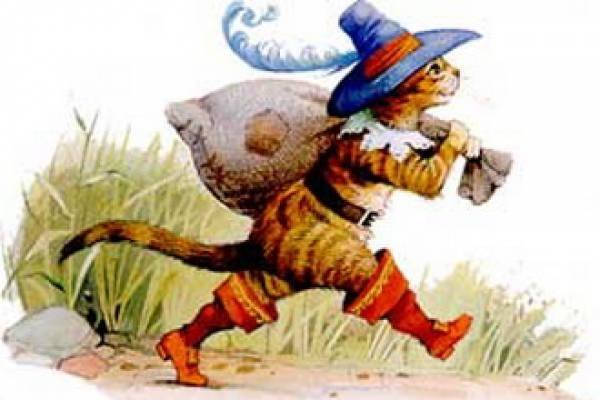
The author of the tale is Charles Perrault. There are two curious details about the authorship:
- "The Puss in Boots, along with other tales from Perrault's pen, were published under the authorship of his son. The fact that Charles wrote such frivolous works could have been bad for his reputation;
- Perrault cannot be called the originator of the very idea of the fairy tale, for the helper animal is an inherent attribute of foreign folklore. Charles's merit is that he was able to put it all together, to create a complete image.
The tale of The Cat in Boots tells readers that what they want can be achieved through wit, courage, and, excuse me, bribery (remember how the cat handed out all sorts of necessities to the workers in the fields so they would answer that the land belonged to the Marquis of Carabas?).
The Tale Puss in Boots. has been known to everyone since childhood. Many consider it a folk tale, as it is so ingrained and easily told to children in the evening before bedtime. In this fairy tale, the clever and enterprising Cat, who inherited the miller's youngest son, brought luck to his master, helped him become the Marquis of Karabas, managed to defeat the evil and foolish giant, and married the miller's son to a royal daughter.
This wonderful magical tale, where the Cat can speak in a human voice, has an author. It is the French storyteller Charles PerraultWho composed eight fairy tales, among which are no less famous "Cinderella," "Little Red Riding Hood," "Tom Thumb," "Donkey Skin," "Sleeping Beauty," "Khokhlik.



